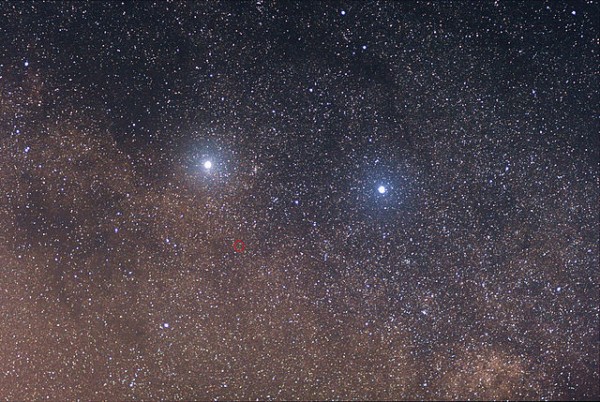Discovery of Proxima Centauri announced in 1915
October 12, 1915. On this date, the Scottish-born astronomer Robert Innes, at the Union Observatory in Johannesburg, South Africa, announced the discovery of what we now know as the nearest star to our sun. That star is Proxima Centauri, one of three known stars in the Alpha Centauri system, with the other two stars being Alpha Centauri A and B. He announced his discovery in a paper dated October 12, 1915, titled A Faint Star of Large Proper Motion.
Formerly, before this announcement, astronomers believed that Alpha Centauri was the closest star to our solar system.
However, Proxima – a relatively small red dwarf star – is closer at a distance of about 4.24 light-years. Conversely, Alpha Centauri lies 4.36 light-years away.
Mark your calendars—Mondays and Fridays at 12:15 p.m. CDT, tune in to our YouTube livestreams! From cosmic discoveries to solar updates, there’s so much to explore. Help us keep this momentum by matching our $50,000 gift. Every bit counts!

The 100-year-anniversary celebration
By the way, SAASTA – the South African Agency for Science and Technology Advancement – celebrated Proxima’s centenary in 2015. And at its website, SAASTA explained:
Although Innes had thoroughly observed Alpha Centauri, with his vast experience and passion for observing double stars he suspected that Alpha Centauri might have a companion. Innes compared photographic plates taken five years apart and observed that a certain faint star had moved. He found that this movement was about the same as that of Alpha Centauri.
After further investigation, he concluded that it was closer to the sun than Alpha. In 1917 he proposed the new star should be called Proxima Centauri, proxima being the Latin word for ‘nearest.’
Proxima Centauri has 3 known exoplanets
Today, Proxima remains the closest star to Earth, but it is too dim to see without optical aid. Also, Proxima Centauri has three confirmed planets, known as Proxima Centauri b, c and d. So these three exoplanets are the nearest planets outside our solar system. Interestingly, Proxima b orbits inside the star’s habitable zone.

Bottom line: October 12, 1915, was the date of the publication of a paper announcing that the little star Proxima Centauri – in the Alpha Centauri system – is the nearest star to our sun.
Read more: Alpha Centauri planets? TOLIMAN will search